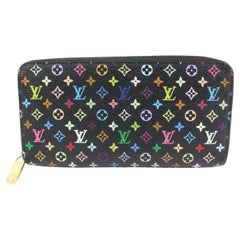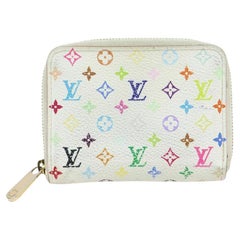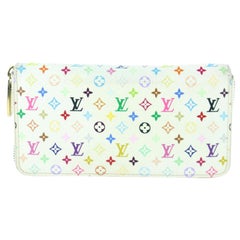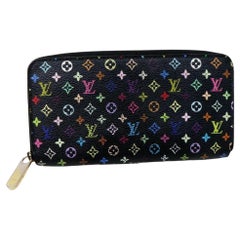Louis Vuitton Multicolor Zippy
21st Century and Contemporary Wallets
20th Century Wallets
Recent Sales
20th Century Spanish Pouches and Wristlets
20th Century Wallets
21st Century and Contemporary Wallets
20th Century Wallets
21st Century and Contemporary Wallets
21st Century and Contemporary Wallets
20th Century Wallets
20th Century Wallets
21st Century and Contemporary Wallets
21st Century and Contemporary Wallets
21st Century and Contemporary Wallets
21st Century and Contemporary Clutches
21st Century and Contemporary Wallets
21st Century and Contemporary Wallets and Small Accessories
21st Century and Contemporary Wallets
21st Century and Contemporary Wallets
21st Century and Contemporary Belt Bags
People Also Browsed
21st Century and Contemporary Pendant Necklaces
Diamond, 18k Gold
21st Century and Contemporary Crossbody Bags and Messenger Bags
21st Century and Contemporary French Structured Shoulder Bags
21st Century and Contemporary French Top Handle Bags
21st Century and Contemporary French Duffel Bags and Carry-On Bags
Early 2000s Top Handle Bags
Early 2000s Italian Tote Bags
21st Century and Contemporary Wallets
21st Century and Contemporary Spanish Shoulder Bags
21st Century and Contemporary Wallets and Small Accessories
21st Century and Contemporary French Wallets
Mid-20th Century French Suitcases and Trunks
21st Century and Contemporary Crossbody Bags and Messenger Bags
Louis Vuitton for sale on 1stDibs
The story behind iconic luxury brand Louis Vuitton — best known for its esteemed handbags, crossbody bags, leather goods, ready-to-wear clothing and more — is one of craft and innovation in the worlds of fashion, jewelry and furniture.
The company’s modest origins can be traced back to when its founder, Louis Vuitton (1821–92), wishing to free himself from the conventional lifestyle in his provincial French city of Anchay as well as a difficult stepmother, left in the early 1830s to make a new life in Paris. The young Vuitton was 13 at the time and would need to travel on foot to get to the capital, which was hundreds of miles away. With stops along the way to make money so that he could forge ahead, the journey took a couple of years, but reward was close at hand.
When he arrived in Paris, Vuitton made a living with his hands. He toiled as a box maker and packer for more than a decade and built relationships with royals and members of the upper class while working for the empress of France, Eugenie de Montijo. In 1854, Vuitton launched his namesake company. The craftsman opened a humble workshop on rue Neuve des Capucines and advertised his services with a small poster that read: “Securely packs the most fragile objects. Specializing in packing fashions.”
Long before his brand would become known globally for its exemplary top-handle bags and stylish totes, Vuitton produced stackable and rectangular trunks. The most common trunks of the era were round, which weren’t ideal for toting and storing. In 1858, Vuitton debuted his lightweight, handcrafted canvas trunks, which were sturdy, rugged and equipped with convenient compartments. Travel’s popularity broadened in the late 19th century, and Vuitton’s trunks could easily be packed into train cars and ships — upright trunks meant hanging wardrobe storage that would allow his clients to transport their sophisticated garments without worry. Demand increased and the company grew. When Louis Vuitton died in 1892, control of the luxury house was passed onto his only son, Georges Vuitton.
In 1914, a Louis Vuitton store opened at 70 Champs-Élysées. The largest travel-goods store in the world at the time, it became the company’s flagship.
The Louis Vuitton brand embodies all the attributes of luxury, from the craftsmanship, exclusivity and relevance to heritage. It’s only appropriate that it boasts one of the most recognizable insignias — the imaginative interlocking of letters and fleurettes — in the fashion world. The famous LV monogram was first used in 1896 as part of an initiative by Georges to prevent counterfeiting of his coveted new line of travel trunks. It’s one of the earliest examples of fashion branding.
The LV monogram would soon appear on everything from bags and various fashion accessories to alligator-skin champagne cases, from stylish apparel and earrings to teddy bears and airplane models.
On 1stDibs, the unmistakable insignia can be found on both modern and vintage Louis Vuitton shoulder bags, suitcases, original 19th-century trunks, jackets and more.
Finding the Right Wallets-small-accessories for You
Vintage and designer wallets and small accessories, such as wristlets, belt bags, clutches and other compact items, can be the perfect accessory for a night out or running everyday errands.
The invention of paper money dates back to the 7th century in China, but, globally, it took a while to catch on. It wasn’t until 1690 in the United States that paper money could finally be printed and used to pay taxes, for example, following the General Court of Massachusetts’s order that a limited batch be produced to pay soldiers owing to a shortage of coins.
As paper money became more common, so too did carrying wallets. Coin purses were no longer the most convenient option for carrying cash.
Today, just as the world’s best-known luxury houses are celebrated for their iconic handbags and purses, brands such as Louis Vuitton, Hermès, Gucci, Chanel and others offer a sweeping array of sophisticated wallets and small accessories for any event. While wallets seem to be getting smaller and the role of cash is dwindling, we simply cannot live without our bags and bag-like accessories. More options have emerged for carrying our essentials, with cardholders, pouches and belt bags made of nylon and leather gaining popularity in recent years.
On 1stDibs, find a collection of vintage and designer wallets and small accessories.
- 1stDibs ExpertApril 5, 2022The MM part of a Louis Vuitton bag name stands for Moyen Modéle. This term is French and translates to Medium Model, meaning that the bag is a medium-sized piece. Shop for authentic Louis Vuitton bags of any size on 1stDibs.
- 1stDibs ExpertApril 5, 2022The date code on Louis Vuitton products refers to the place and date the item was made. Generally, the two letters indicate the location and the four numbers pertain to the date. As of March 2021, date codes have been replaced by microchips. Shop a selection of Louis Vuitton items on 1stDibs.
- 1stDibs ExpertApril 5, 2022For its return policy, Louis Vuitton offers complimentary returns and exchanges within 30 days. The item needs to be in pristine condition with its original packaging. Shop a collection of vintage and new Louis Vuitton designs from some of the world’s top boutiques on 1stDibs.
- 1stDibs ExpertMarch 7, 2024Louis Vuitton products are made in various countries. The luxury brand’s leather goods collection is crafted in workshops located in France, Spain and the United States. Ready-to-wear pieces, footwear and sunglasses are manufactured in France and Italy, while jewelry collections are produced in France, Italy and Switzerland. Timepieces are created exclusively in the Louis Vuitton watchmaking workshop in Geneva, Switzerland. You’ll find a wide range of Louis Vuitton products from some of the world’s top sellers on 1stDibs.
- 1stDibs ExpertFebruary 22, 2021The Neverfull MM is one of Louis Vuitton's most popular bags. It is not being discontinued.
- Can you return Louis Vuitton?1 Answer1stDibs ExpertMarch 7, 2024Yes, you typically can return items purchased directly from Louis Vuitton online or in a brand-owned retail store, provided you didn't use or damage them. Normally, Louis Vuitton places a limit on how long you have to return items. Check the information included with the item for specific return policies. You’ll find a large selection of Louis Vuitton on 1stDibs.
- 1stDibs ExpertMarch 7, 2024Louis Vuitton is available for purchase from its official Louis Vuitton boutiques, a variety of online retailers and at luxury department store chains such as Nordstrom, Neiman Marcus and more. When shopping online for Louis Vuitton products, it’s important to choose a reputable seller to ensure your purchase is authentic. On 1stDibs, find a collection of authentic Louis Vuitton goods from some of the world’s top sellers.
- 1stDibs ExpertApril 5, 2022While the opinion of the most iconic Louis Vuitton bag is largely contested, one bag has stood the test of time. The Speedy bag, originally made in the 1930s, was designed in response to advances in transportation and was a departure for the fashion house from its usual steamer trunk collection. Shop a variety of vintage and modern Louis Vuitton bags on 1stDibs.
- 1stDibs ExpertApril 5, 2022Vachetta is a kind of leather used by Louis Vuitton. It is cowhide leather that has been left untreated, and gains a luxurious patina over time when cared for properly. Browse an assortment of authentic Louis Vuitton products crafted from Vachetta leather on 1stDibs.
- What is Louis Vuitton known for?1 Answer1stDibs ExpertApril 5, 2022Louis Vuitton is renowned for its luxury products, from bags and shoes to scarves and fashion. The brand is famous for durability, exceptionally high-quality materials and its unmistakable logo and patterns. Find a wide range of expertly authenticated Louis Vuitton pieces on 1stDibs.
- 1stDibs ExpertFebruary 22, 2021Yes, Louis Vuitton handbags are typically cheaper in France. On 1stDibs, however, you can find Louis Vuitton handbags at a range of prices.
- Who is the owner of Louis Vuitton?6 Answers1stDibs ExpertJanuary 4, 2022Bernard Arnault is the Chairman and CEO of Louis Vuitton Moët Hennessy, commonly referred to as LVMH. The luxury empire also includes the fashion houses of Christian Dior, Fendi and Givenchy. Arnault was born in Roubaix, France in 1949 and has been the Chairman and CEO of LVMH since 1989.1stDibs ExpertMarch 22, 2022The French corporation LVMH Moët Hennessy Louis Vuitton is the owner of Louis Vuitton. Its CEO and Chairman of the Board is Bernard Arnault as of December 2021. LVMH Moët Hennessy Louis Vuitton is a publicly traded company owned by its shareholders. Find a large collection of Louis Vuitton on 1stDibs.1stDibs ExpertApril 5, 2022Louis Vuitton is owned by the holding company LVMH Moët Hennessy – Louis Vuitton. Since 1989, the chairman has been Bernard Arnault. Find authentic vintage and modern Louis Vuitton pieces from some of the world’s top sellers on 1stDibs.1stDibs ExpertMarch 6, 2024Bernard Arnault is the Chairman and CEO of Louis Vuitton Moët Hennessy, commonly referred to as LVMH. The luxury empire also includes the fashion houses of Christian Dior, Fendi and Givenchy. Arnault was born in Roubaix, France in 1949 and has been the Chairman and CEO of LVMH since 1989.1stDibs ExpertMarch 6, 2024The French corporation LVMH Moët Hennessy Louis Vuitton is the owner of Louis Vuitton. Its CEO and Chairman of the Board is Bernard Arnault as of December 2021. LVMH Moët Hennessy Louis Vuitton is a publicly traded company owned by its shareholders. Find a large collection of Louis Vuitton on 1stDibs.1stDibs ExpertMarch 6, 2024Louis Vuitton is owned by the holding company LVMH Moët Hennessy – Louis Vuitton. Since 1989, the chairman has been Bernard Arnault. Find authentic vintage and modern Louis Vuitton pieces from some of the world’s top sellers on 1stDibs.
- 1stDibs ExpertApril 5, 2022The Louis Vuitton Neverfull GM measures 15.6’’ long by 12.8’’ high by 7.9’’ wide. It is the largest size of the Neverfull bag model. Shop for the classic Louis Vuitton Neverfull bag from some of the world’s top boutiques on 1stDibs.
Read More
Louis Vuitton and Murakami’s Collab Is As Fresh As Ever
The Japanese artist is one of many creators with whom the French fashion house has partnered to impressive effect.
This Virgil Abloh for Louis Vuitton Prism Bag Is Highly Collectible — and Just Right for a Weekend Getaway
The late designer created an iridescent, irreverent take on the nearly century-old travel staple.
How to Spot a Fake Louis Vuitton
What are the telltale signs that you're holding a real Louis Vuitton and not a knockoff? We spoke with expert Diane D’Amato to find out. Of course, you don't have to worry about fakes on 1stDibs, where every seller is highly vetted.
Inside Louis Vuitton’s Most Popular Handbag Collaborations
The venerable brand has earned accolades (and gained new fans) for partnerships that meld fashion with art.
14 Iconic Luxury Handbags and the Stories behind Them
When the name of a bag is as well-known as its brand, you know it's a classic.



